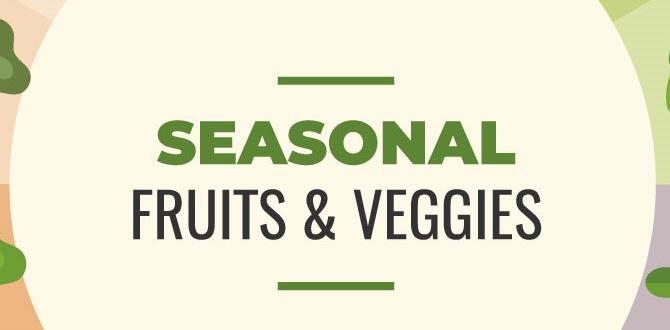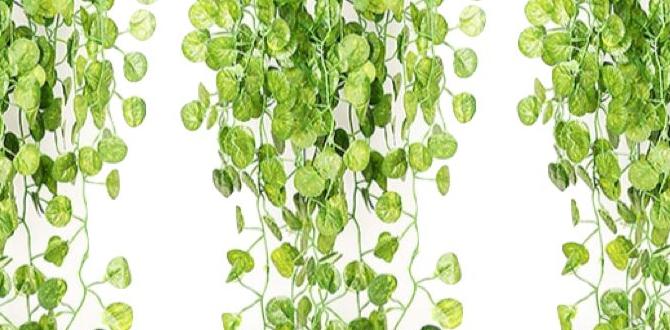Quick Summary: Embrace eco-friendly gardening to cultivate a thriving, sustainable garden that benefits both your plants and the planet! This guide offers essential, beginner-friendly tips for reducing waste, conserving water, and nurturing healthy soil, applicable to both indoor and outdoor spaces.
Hello green thumbs and future garden gurus! Are you excited to dig into gardening but a little worried about your footprint? Maybe you’ve seen beautiful gardens and wondered how to create one without harming our precious planet. It’s totally understandable! So many of us want to grow our own beautiful plants, fresh herbs, or tasty veggies, but we don’t know where to start with sustainable practices. The good news is, gardening can be incredibly kind to the Earth. We’re going to break down super simple, proven eco-friendly gardening tips that anyone can use, whether you have a sprawling backyard or a sunny windowsill. Get ready to discover how easy and rewarding it is to make your garden a little greener, naturally!
Eco-Friendly Gardening Tips: Proven Essentials for a Greener Thumb
Gardening is a wonderful way to connect with nature, beautify your space, and even grow your own food. But how can we do this in a way that’s gentle on the environment? Embracing eco-friendly gardening means making conscious choices that support healthy ecosystems, conserve resources, and reduce waste. It’s not about complicated methods; it’s about smart, simple habits that make a big difference. Let’s explore some essential tips to get your sustainable garden blooming!
Why Go Eco-Friendly with Your Garden?
Choosing eco-friendly gardening practices isn’t just a trend; it’s a responsible and rewarding way to garden. By adopting these methods, you contribute to a healthier planet, improve your local environment, and often, create a more vibrant and resilient garden. You’ll find that nature often rewards your kindness with flourishing plants and a habitat for beneficial critters.
- Environmental Benefits: Reduce pollution, conserve water, and protect biodiversity.
- Healthier Plants: Natural methods lead to stronger, healthier plants less susceptible to pests and diseases.
- Cost Savings: Reusing materials and making your own compost can significantly cut down on expenses.
- Personal Satisfaction: There’s immense joy in knowing you’re nurturing a garden that’s good for you and the Earth.
Tip 1: Master the Art of Composting
Composting is like giving your garden a superfood boost, naturally! It’s the process of recycling organic waste – think kitchen scraps and yard trimmings – into a rich, dark, soil-like material that plants absolutely adore. It’s one of the most impactful eco-friendly gardening tips you can adopt.
What Can You Compost?
- Fruit and vegetable scraps
- Coffee grounds and tea bags
- Eggshells
- Yard waste (leaves, grass clippings, small twigs)
- Shredded newspaper and cardboard
What to Avoid Composting?
- Meat, fish, and dairy products (can attract pests and create odors)
- Oily or greasy foods
- Diseased plants
- Pet waste (from cats and dogs)
- Weeds that have gone to seed
How to Start Composting
You don’t need a huge backyard for composting. There are options for every space:
Backyard Composting:
This is the most common method. You can use a store-bought bin, build your own from pallets, or simply create a pile in a designated corner of your yard. The basic idea is to layer “greens” (like kitchen scraps) and “browns” (like dry leaves and twigs). Aim for a good mix, keep it moist (like a wrung-out sponge), and turn it occasionally to aerate. Your compost should be ready in a few months!
Worm Composting (Vermicomposting):
Perfect for apartment dwellers or those with limited space, worm composting uses special red wiggler worms to break down food scraps. You’ll need a worm bin (which can be a plastic tote with holes), bedding material (like shredded newspaper), and a starter culture of worms. It produces nutrient-rich worm castings and a liquid “compost tea” that’s fantastic for plants. For more detailed guidance, the U.S. Environmental Protection Agency (EPA) offers excellent resources on home composting.
Tip 2: Conserve Water Like a Pro
Water is a precious resource, and smart watering is a cornerstone of eco-friendly gardening. Reducing water usage not only helps the environment but can also save you money on your water bill and keep your plants healthier by preventing overwatering.
Smart Watering Techniques:
- Water Deeply, Less Often: Encourage deep root growth by watering thoroughly rather than giving plants a little sip every day. This makes them more drought-tolerant.
- Water Early or Late: The best times to water are in the early morning or late evening. This minimizes water loss due to evaporation in the heat of the day.
- Mulch, Mulch, Mulch! Applying a layer of organic mulch (like wood chips, straw, or compost) around your plants is a game-changer. It helps retain soil moisture, suppresses weeds, and regulates soil temperature.
- Collect Rainwater: Set up a rain barrel! It’s a simple and effective way to collect free, naturally soft water for your garden. Many local regulations encourage or even offer rebates for rain barrels. Check out resources from organizations like the Xerces Society for guidance on water conservation and native plant gardens.
- Choose Drought-Tolerant Plants: Selecting plants that are native to your region or naturally adapted to dry conditions means they’ll require less supplemental watering once established.
Tip 3: Ditch the Chemicals for Natural Pest and Disease Control
Chemical pesticides and herbicides can harm beneficial insects, wildlife, and even your own health. Eco-friendly gardening prioritizes natural methods to keep pests and diseases in check.
Natural Pest Control Strategies:
- Beneficial Insects: Attract good bugs like ladybugs, lacewings, and praying mantises that eat common garden pests. Plant flowers like dill, fennel, yarrow, and marigolds to invite them.
- Companion Planting: Some plants naturally deter pests when planted near others. For example, planting marigolds near tomatoes can help repel nematodes. Nasturtiums can act as a trap crop for aphids, drawing them away from your more valuable plants.
- Handpicking Pests: For visible pests like slugs or larger caterpillars, simply pick them off by hand (wear gloves if you prefer!) and drop them into a bucket of soapy water.
- Homemade Sprays: A simple solution of water and a few drops of mild soap or neem oil can effectively deter many soft-bodied insects like aphids and spider mites. Always test on a small part of the plant first.
- Healthy Soil = Healthy Plants: Plants grown in rich, healthy soil are naturally more resistant to pests and diseases. Focus on building your soil health (see Tip 5!).
Natural Disease Management:
- Good Air Circulation: Space plants appropriately to allow for good airflow, which helps prevent fungal diseases.
- Remove Infected Parts: Promptly remove any leaves or stems showing signs of disease to prevent it from spreading. Dispose of them in the trash, not your compost bin.
- Crop Rotation: If you grow vegetables, rotating where you plant certain crops each year can help break disease cycles in the soil.
Tip 4: Embrace Sustainable Soil Health
Healthy soil is the foundation of a thriving garden. It’s teeming with life – microorganisms, fungi, and earthworms – that help plants grow strong and vibrant. Eco-friendly gardening focuses on nurturing this living system.
Key Practices for Soil Health:
- Compost: As mentioned, compost is gold for your soil! It improves soil structure, water retention, and provides essential nutrients.
- Avoid Tilling: Frequent tilling can damage the soil structure, disrupt beneficial organisms, and lead to erosion. Consider a no-till or minimal-till approach where possible.
- Cover Cropping: Planting cover crops (like clover, rye, or vetch) during off-seasons protects the soil from erosion, suppresses weeds, and adds organic matter and nutrients when tilled in or cut down.
- Use Organic Fertilizers: Opt for natural fertilizers like compost, granular organic feeds, or liquid feeds derived from seaweed or fish emulsion. These feed the soil as well as the plant.
The health of your soil is crucial. You can learn more about soil biology and how to feed it naturally by exploring resources from university extension offices, such as those at University of Delaware Cooperative Extension on soil testing and amendments.
Tip 5: Choose Sustainable Materials and Practices
From the pots you use to the tools you wield, your choices in gardening materials can have an environmental impact. Embracing sustainable options makes your gardening journey even more eco-conscious.
Sustainable Material Choices:
- Recycled and Reusable Pots: Instead of buying new plastic pots every season, opt for terracotta, ceramic, or pots made from recycled materials. You can also reuse plastic pots you’ve acquired or repurpose items like old buckets, tins, or even fabric bags.
- Natural and Biodegradable Materials: For plant markers, support structures, or edging, consider using reclaimed wood, bamboo, or natural fibers.
- Avoid Peat Moss: Peat bogs are important ecosystems and carbon sinks. When harvesting peat, these habitats are destroyed. Look for peat-free potting mixes made with coco coir, compost, or other sustainable alternatives.
- Second-hand Tools: Many gardening tools are built to last. Check out garage sales, flea markets, or online marketplaces for good quality used tools.
Tip 6: Grow Native and Pollinator-Friendly Plants
Choosing plants that are native to your region is one of the most effective ways to support local ecosystems. Native plants are adapted to your climate and soil, meaning they generally require less water, fertilizer, and pest control. They also provide essential food and habitat for native wildlife, including crucial pollinators like bees and butterflies.
Benefits of Native and Pollinator Plants:
- Low Maintenance: Once established, they are hardy and require less care.
- Support Local Wildlife: They offer food sources (nectar, pollen, seeds, berries) and shelter for birds, insects, and other animals.
- Biodiversity: They contribute to the health and diversity of your local ecosystem.
- Beautiful and Unique: Native plants offer a unique aesthetic that reflects the natural beauty of your area.
To find out which plants are native to your specific area, visit websites of local conservation districts or organizations like the National Wildlife Federation, which offers a Native Plant Finder tool based on your zip code.
Tip 7: Reduce, Reuse, Recycle in the Garden
This mantra of sustainability applies beautifully to gardening. Every opportunity to reduce waste, reuse materials, and recycle what you can makes a difference.
Practical “Reduce, Reuse, Recycle” Ideas:
- Reduce Plastic Use: As mentioned, choose alternatives to single-use plastic pots and packaging.
- Reuse Containers: Yogurt cups, milk jugs, and takeaway containers can all be repurposed as seed-starting pots or small planters. Just remember to add drainage holes!
- Repurpose Household Items: Old tools, broken furniture, even worn-out clothing can often find new life in the garden as supports, decorative elements, or weeding tools.
- Recycle What You Can’s If you must use plastic products, ensure they are recyclable and place them in the appropriate recycling bins.
- Share and Swap: Share excess seeds, seedlings, or tools with neighbors and gardening friends. It’s a great way to reduce waste and build community.
Here’s a quick look at some common garden items and their sustainable alternatives:
| Traditional Item | Eco-Friendly Alternative | Why It’s Better |
|---|---|---|
| Single-use plastic pots | Terracotta, ceramic, coir pots, fabric grow bags, repurposed containers | Reduces plastic waste, often biodegradable or reusable for many years. |
| Peat-based potting mix | Coco coir, compost-based mixes, sustainable soil blends | Protects fragile peat bog ecosystems. |
| Chemical fertilizers/pesticides | Compost, worm castings, organic fertilizers, beneficial insects, homemade sprays | Safer for wildlife, beneficial insects, and soil health; prevents water pollution. |
| Buying new gloves/tools every year | Durable, high-quality tools; second-hand tools; repairing existing ones | Reduces manufacturing demand and waste. |
Tip 8: Energy-Smart Gardening
Even how you power your gardening can be more eco-friendly. This is particularly relevant for indoor gardening setups but applies outdoors too.
Energy-Saving Tips:
- Maximize Natural Light: For indoor plants, place them near windows that receive the appropriate amount of light for their needs. Rotate them regularly so all sides get exposure.
- Efficient Lighting: If supplemental lighting is necessary for indoor gardening, use LED grow lights. They are much more energy-efficient and produce less heat than older types of grow lights.
- Smart Irrigation: Use drip irrigation or soaker hoses outdoors to deliver water directly to plant roots, minimizing evaporation and run-off. They are far more efficient than sprinklers.
- Passive Solar Design: If building a greenhouse or cold frame, orient it to take full advantage of the sun’s path for warmth and light, reducing the need for artificial heating and lighting.
FAQ: Your Eco-Friendly Gardening Questions Answered
Q1: Is eco-friendly gardening more expensive?
Not necessarily! While some specialized eco-friendly products might have a higher upfront cost, many practices, like composting and using rainwater, actually save you money. Reusing materials and choosing native plants also reduces ongoing expenses.
Q2: I live in an apartment. Can I still garden eco-friendly?
Absolutely! Container gardening on a balcony or windowsill can be very eco-friendly. Focus on worm composting, using peat-free potting mixes, collecting greywater (from rinsing vegetables, for example) if safe, and choosing compact, water-wise plants.
Q3: How do I know if my soil needs compost?
If your soil is hard, drains poorly, or plants seem to struggle to grow, it likely needs compost. You can also do a simple squeeze test: good soil will crumble easily when squeezed, while poor soil will either stay in a hard ball or feel overly dry and dusty.
Q4: What are the easiest eco-friendly pest solutions for beginners?
Start with attracting beneficial insects by planting flowers like marigolds and dill. For common pests like aphids, a strong spray of water from the hose or a gentle soap-and-water solution can be very effective. Regular observation of your plants is key!
Q5: How much difference can one person make with eco-friendly gardening?
Every little bit counts! By adopting these practices, you reduce your personal environmental impact, contribute to local biodiversity, and can inspire others through your actions. Imagine the collective impact if everyone made even a few of these changes!
Q6: Can I use my kitchen vegetable scraps to feed my outdoor garden plants directly?
While direct application of some scraps can benefit soil, it’s generally better to compost them first. Raw scraps can attract pests, create odors, and may not break down efficiently or provide balanced nutrients. Composting transforms them into readily available food for your plants.
Conclusion
Embarking on an eco-friendly gardening journey is a rewarding experience that connects you more deeply with nature while nurturing a beautiful, productive space. By incorporating these proven essentials—from mastering composting and conserving water to nurturing soil health and choosing sustainable materials—you’re not just growing plants; you’re cultivating a healthier planet. Remember, every small step, like a single seed planted with intention, contributes to a larger, greener outcome. Whether you’re an indoor enthusiast or an outdoor adventurer, these tips offer a pathway to a more sustainable and joyful gardening practice. Happy, eco-conscious growing!




